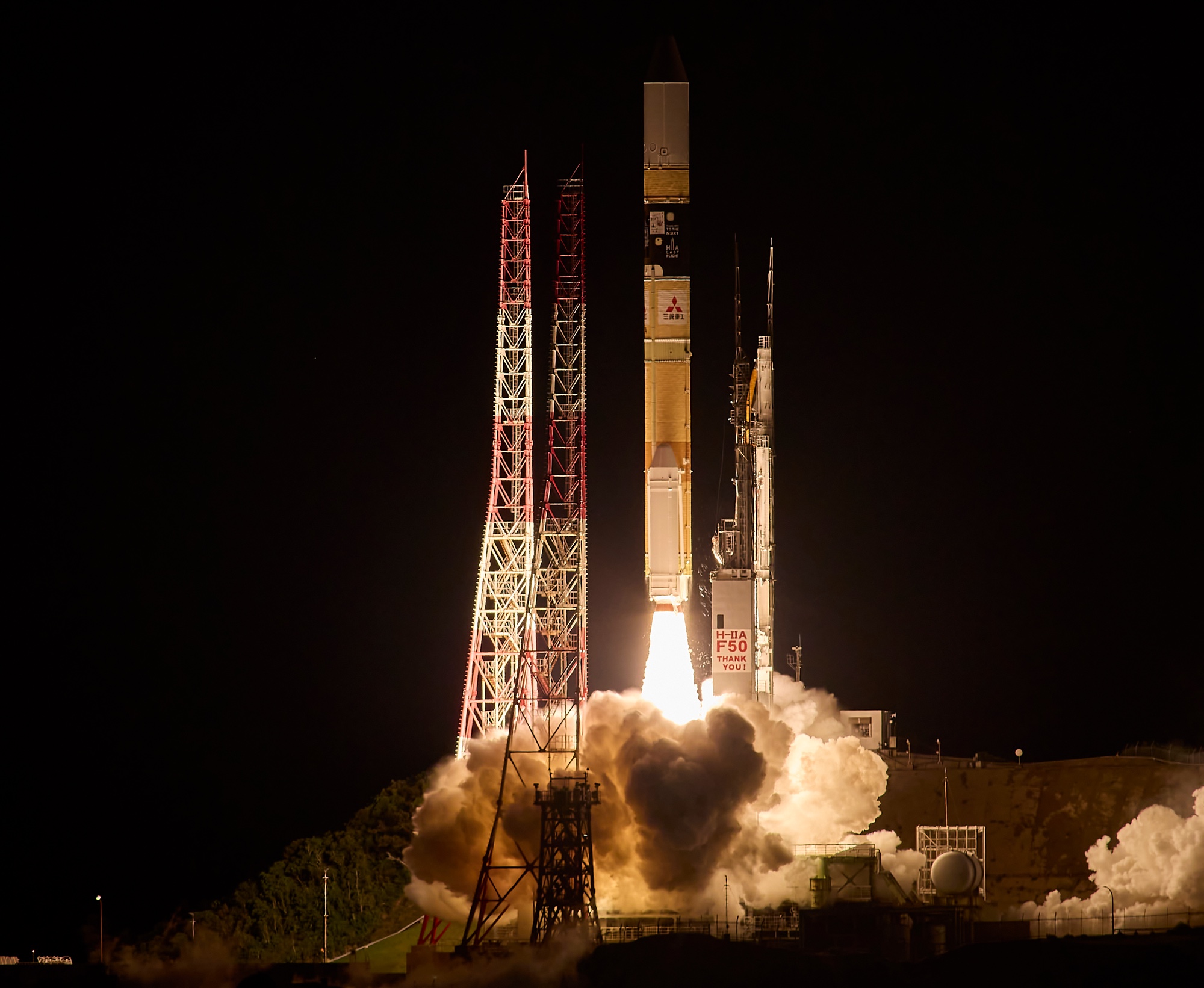WASHINGTON — An H-2A rocket successfully launched an Earth science satellite June 28 on the final flight of a vehicle that had long been the workhorse for Japanese space access.
The H-2A lifted off from the Tanegashima Space Center in Japan at 12:33 p.m. Eastern. It deployed its payload, the GOSAT-GW or Ibuki GW, satellite into a sun-synchronous orbit 16 and a half minutes later. The Japanese space agency JAXA later reported that GOSAT-GW had extended its solar arrays as planned after deployment.
GOSAT-GW, or Global Observing Satellite for Greenhouse Gases and Water Cycle, is a 2,600-kilogram spacecraft built by Mitsubishi Electric Corporation for JAXA. The spacecraft carries two major instruments, a microwave scanning radiometer to measure water on land, oceans and the atmosphere, and a spectrometer to observe greenhouse gases in the atmosphere. GOSAT-GW has a planned seven-year lifetime.
The launch was the 50th and final flight of the H-2A, a rocket that Japan had long relied on for civil, commercial and military satellites. The H-2A made its debut in 2001 and was successful in every launch but one, a November 2003 launch of two reconnaissance satellites that failed when one of its solid rocket boosters failed to separate.
The H-2A was primarily used for Earth and space science missions for JAXA, and Information Gathering Satellites for the Japanese military. The vehicle did perform a handful of commercial launches, such as for satellite operators Inmarsat and Telesat, but the vehicle’s relatively high cost and low flight rate made it difficult to win orders.
The H-2A was a redesigned, upgraded version of the short-lived H-2 rocket, which flew seven times from 1994 to 1999. Another variant, the H-2B, launched nine times from 2009 to 2020, each carrying an HTV cargo vehicle for the International Space Station.
The Japanese government announced plans more than a decade ago to phase out the H-2A for the H3 rocket, which would offer a higher flight rate and lower costs. The H3 made its debut in March 2023, but failed to reach orbit when its second stage failed to ignite.
The H3 made its first successful launch nearly a year later, reaching orbit with a test payload. The rocket has flown three more times since then, most recently in February 2025, all successfully.
The final H-2A launch was one of four orbital launches that occurred in a span of less than 13 hours on June 28. A Rocket Lab Electron launched early June 28 carrying a satellite for a confidential commercial customer. The Electron and H-2A launches were bookended by two SpaceX Falcon 9 launches of Starlink satellites, one launching at 12:26 a.m. Eastern from Florida and the other at 1:13 p.m. Eastern from California.



